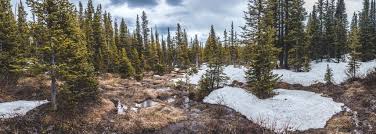 |
| Tundra Ecosystems in Climate Crisis: From Carbon Sink to Source |
Recent reports underscore the profound impact of climate change on tundra ecosystems, potentially altering them from carbon sinks to carbon sources. Tundras, present in Arctic and alpine regions, have historically sequestered carbon in frozen soils, but rising temperatures are triggering significant changes, leading to increased carbon release.
Key Findings:
- An international team of over 70 scientists conducted open-top chamber (OTC) experiments at 28 tundra sites worldwide for 25 years.
- A mean increase of 1.4°C in air temperature, 0.4°C in soil temperature, and a 1.6% drop in soil moisture resulted in a 30% increase in ecosystem respiration during the growing season.
- Increased respiration was attributed to heightened metabolic activity in plants and microbes, releasing carbon.
- Tundra regions with higher nitrogen limitations and sites that stimulated plant and microbial turnover exhibited greater sensitivity to warming through respiration responses.
Implications:
- The warming rate in the tundra biome could reach 0.73°C per decade, significantly higher than the global average rate of 0.19°C per decade.
- The study confirms earlier findings on the impact of global warming on biogeochemical conditions and provides precise data on changes in nitrogen concentrations in deeper mineral soil layers.
- The nonlinear pattern of ecosystem respiration increase could be due to underlying microbial and plant processes reacting to warming at different rates.
Importance for Climate Modeling:
- Understanding the connections between soil nitrogen, carbon, pH, and respiration in response to climate warming is crucial for improving predictions of future warming.
- Incorporating the tundra carbon cycle into climate models can enhance the accuracy of global and regional climate predictions.
- The results from the experiment can help generate more accurate climate models that predict future carbon emissions.
About Tundra Ecosystems:
- Tundra ecosystems cover approximately 10% of the Earth’s land surface.
- The Arctic tundra stores an estimated 1,700 billion metric tons of carbon in its soils, more than twice the amount currently in the atmosphere.
- Thawing permafrost in the tundra can release greenhouse gases like carbon dioxide and methane, further amplifying global warming.
- Changes in tundra vegetation, such as the expansion of shrubs, can affect the land surface's reflectivity and alter the regional climate.
